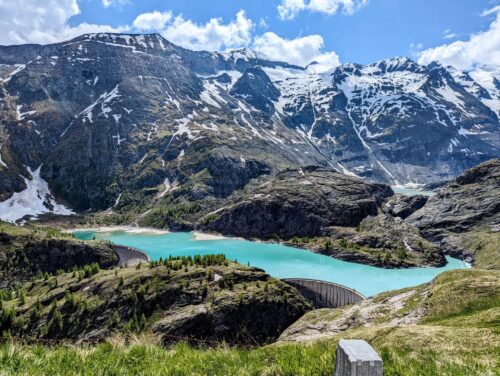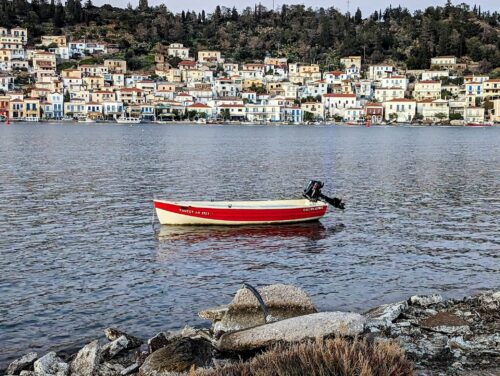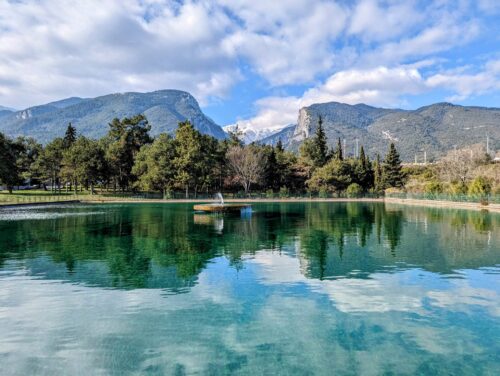We had a lovely time touring around the NC500 and the NE250, but all good things come to an end. With one eye on the weather and the threat of winter snows looming it was time to start heading south.
This time round we were planning to spend no more than the 90 days in Europe allowed under Schengen. As we had a commitment early in March in Devon we wanted to get across the channel mid-December. Rather than driving long distances we prefer small hops and spending some time at each place. So for us, rushing southward wasn’t what we wanted to do.
Disclosure: some of the links on this site are affiliate links. This means that at no additional cost to you I may earn a small commission if you click through and make a purchase. In addition, as an Amazon Associate, I earn from qualifying purchases.
The Detail
Distance Covered: 1454 miles in 18 days
Financial: Fuel £404; Site Fees/Parking £15; Groceries £310; Laundry £22; Eating Out £180
Stopovers: Dufftown; Schiehallion; Lochearnhead; Culross; Edinburgh; Coldstream; Otterburn; Gateshead; Lindisfarne; Rothbury; Nanthead; Kirby Fleetham; Whitby; Shouldham; Barlowes; Beccles; Southwold;
From finishing the NE250 to arriving at the in-laws at Sittingbourne took about 3 weeks. Along the way we saw some fantastic scenery and visited many interesting places. These are just some of the highlights:
Schiehallion
Schiehallion is a mountain very close to the centre of Scotland. It is claimed that the centre lies a few miles from the village of Newtonmore, Badenoch. Its location is marked by a stone set into a rock. Schiehallion is a very popular walking destination as it is one of the easiest Munros to climb
A Munro is classified as a mountain in Scotland over 3000 feet tall. The term Munro applies to separate mountains, while the lesser summits close to the main peak are known as Munro Tops. Other lesser mountains in Scotland are classified as Corbetts if between 2,500 to 3,000 ft or Grahams if between 2,000 to 2,500 ft.
Schiehallion has a slightly different significance for us. We were heavily involved with CAMRA (Campaign for Real Ale) for a while. Schiehallion, a speciality Ale brewed by Harviestoun was a winner at the great British beer festival on at least 3 occasions and a firm favourite with the local branch (South Devon). So while in the area we had to pay a visit!
Schiehallion is also memorable for another less happy reason – it was the location of our first accident in the motorhome. I was reversing out of a parking space and lost concentration for just a moment and clipped the back, only very gently, but enough to damage the light fitting.
Soldiers Leap
The Soldiers Leap is a spot on the River Garry near Killiecrankie where a redcoat soldier, Donald MacBean, leapt 18 feet over the river to escape the persuing Jacobites after the battle of Killiecrankie in 1698.
Here the river flows through a lovely, if somewhat steep, wooded gorge, where the tree-lined slopes are home to a wide variety of flora and fauna.
Pitlochry Dam and fish ladder
When the dam and fish ladder at Pitlochry were built around 1947 there was some contention because it was felt it may negatively impact tourism. In fact, the opposite has been true and Pitlochry is now famous for its hydro-electric dam and fish ladder,
The ladder was constructed to enable salmon to bypass the dam and reach Loch Fascally above. The ladder is 310 metres long and consists of 34 chambers, 3 of which are resting pools, linked together by tunnels that the salmon can swim through. It enables around 5,000 salmon to return to their spawning grounds each year.
There is an excellent circular walk from the town centre which takes you across the dam and past the visitor centre.
General Wade's legacy
In 1725 Lieutenant-General George Wade was appointed Commander in Chief of His Majesty’s Forces in North Britain. He was ordered to build a network of roads and bridges throughout the Scottish Highlands to aid the transport of men and equipment.
Over the next 15 years, he oversaw the building of 300 miles of roads, linked by over 40 bridges. The most impressive ‘Wade bridge’ spans the River Tay at Aberfeldy, allowing access to the central and eastern Highlands from the south.
The Birks of Aberfeldy
The Birks of Aberfeldy is a circular walk of about 1.5 miles through mature mixed woodland on the western outskirts of Aberfeldy. It follows the slopes of the gorge up one side to the falls of Moness and down the other. The path is well-defined, winding through mature forest, and gives excellent views of the falls.
The Birks of Aberfeldy were named after a poem of the same name by Scotland’s national bard, Robert Burns, who penned his poem in 1787. You will find a statue of Robert Burns seated on a bench, notepad in hand as you walk. Further on, there is a plaque recording the spot where Burns is said to have written his poem.
Lochearnhead
Lochearnhead is a village situated at the western end of Loch Earn, a gently lapping Highland loch dramatically edged by mountains at the western edge of Strathearn. The area is best known as a destination for fishing and watersports. However we visited the area primarily because it was recommended by some very dear friends who are involved with the Scouts and take their troop there regularly.
Initially we were only planning a brief visit so that we could say we had been there, but we loved the area so much we ended up staying there 3 days – a rarity on our travels so far!
Take care if decide to drive a motorhome all the way around – the South side is quite narrow – I went so slow a cyclist overtook me, much to Carol’s amusement.
Edinburgh
Any visit to Scotland wouldn’t be complete without a visit to the capital, Edinburgh. We are, by our own admission, not city people however we thoroughly enjoyed our time there and hope to return soon.
Looming over the city is Edinburgh Castle, which is built on an extinct volcano. It is approached via the Royal Mile (actually just over a mile long) lined with fabulous shops and eateries. There is a medieval old town and elegant Georgian New Town.
Arthur’s Seat, an imposing peak in the famous Holyrood Park is well worth a visit with its’ sweeping views. Check out all the swans at St Margarets loch (the duck pond) and keep an eye on them if you have a dog – they swim towards dogs!
Other interesting facts:
It was the first city in the entire world to have its own fire service.
It has 112 parks and more trees per head of population than any other city in the U.K.
Coldstream
The small town of Coldstream lies to the north of the river tweed, very close to the English border in Berwickshire. The town is probably best known for the Coldstream guards. The Coldstream Museum highlights the history of the regiment and is located on the site of the original Headquarters.
While best known for its historical significance it is also a good walking area with many pleasant river, lakeside and woodland walks. The town itself is also very pleasant and worth a wander round.
Lindisfarne and an amazing sunset
The Holy Island of Lindisfarne, often referred to as Holy Island or Lindisfarne, originally got its name when, in 635AD, Saint Aidan came from Iona and chose to found his monastery on the island.
The island is accessed by a tidal causeway, meaning that twice a day access to and from the island is blocked by the sea. There is a castle which is managed by the National Trust and a priory, which is managed by English Heritage. Both are well worth a visit.
The harbour at Holy Island is characterised worldwide by pictures of the large, upturned fishing boats lining the beach. Now no longer seaworthy they are used as work sheds. A walk around the harbour and surrounding area is definitely worthwhile.
A visit to St. Aidans Lindisfarne Mead Shop is also a must to sample some of the superb local mead. The Journey from Holy Island to our intended stopover was also where we saw the most spectacular sunset of our travels.
Hadrians Wall and Sycamore Gap
Whilst we were in this part of the country we both wanted to see at least some of Hadrians’ Wall. Carol in particular wanted to see the well-known Sycamore Gap.
We parked at Housestead Roman Fort from where it is a 5-mile round walk to Sycamore Gap, most of it following the wall itself, which is very well preserved in many places. There are some steep sections and slippery steps/stones in some places, but it is nonetheless a lovely walk with some superb views.
Whitby
Whitby is a seaside to in Yorkshire with a working seaport. It is surrounded by the gorgeous countryside of the North Yorkshire Moors.
It is well known for its’ ruined gothic abbey which was apparently Bram Stoker’s inspiration for Dracula. There are also links to Captain Cook, and the memorial museum is located in the house where he once lived.
But let’s be honest. The thing that most people go to Whitby for is the fish and chips. There are a plethora of places selling them, and we weren’t disappointed.
Beccles
A very important stop for Zeus!
It was an important play date for Zeus – at least a dozen fellow Dali dogs and their families, loose in a two acre secure field with many treats for dogs and humans. Zeus had a wonderful time and it was lovely to meet fellow Dali dog owners face to face.
Southwold/Adleburgh
Somewhere our dear Scout friends told us we must visit (nothing to do with it being his favourite beer made by the local brewery in any way).
A pleasant few hours spent exploring before meeting more dear friends at nearby Adleburgh where Zeus renewed his friendship with their Dali girls.
There is so much more we saw and did that I haven’t included here – you’ll just have to go see it for yourself!
After spending a short while in Kent getting some essential maintenance done and giving the van a service we hopped across the channel on the Eurotunnel. From Calais we made our way down through western France, and that is what my next post will be about.
I haven’t gone into great detail about anything in particular in this post, so if you would like me to expand on anything please leave a comment and I will endeavor to write another separate post on the topic.
Happy Motorhoming.
Hope You Enjoy!
Please leave us a comment!














































































































